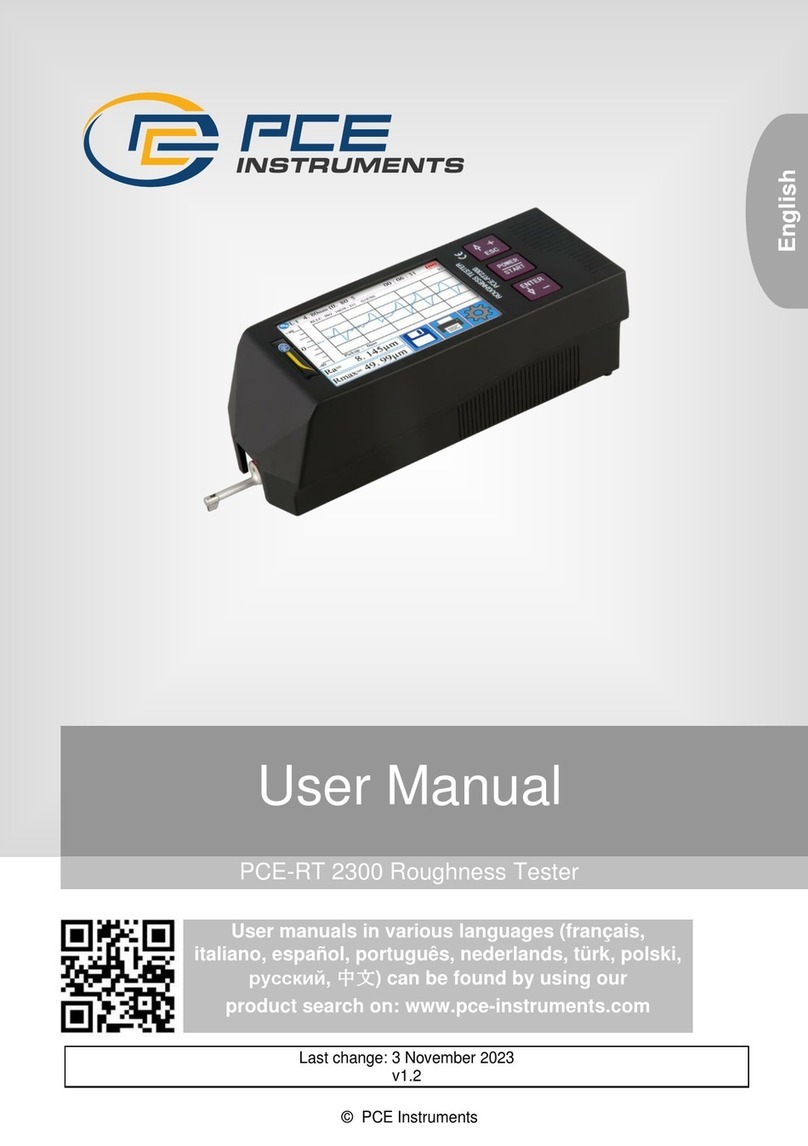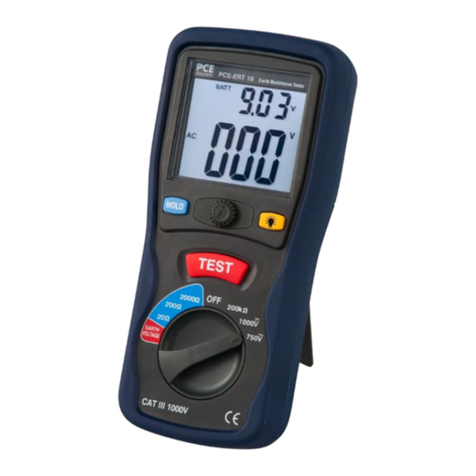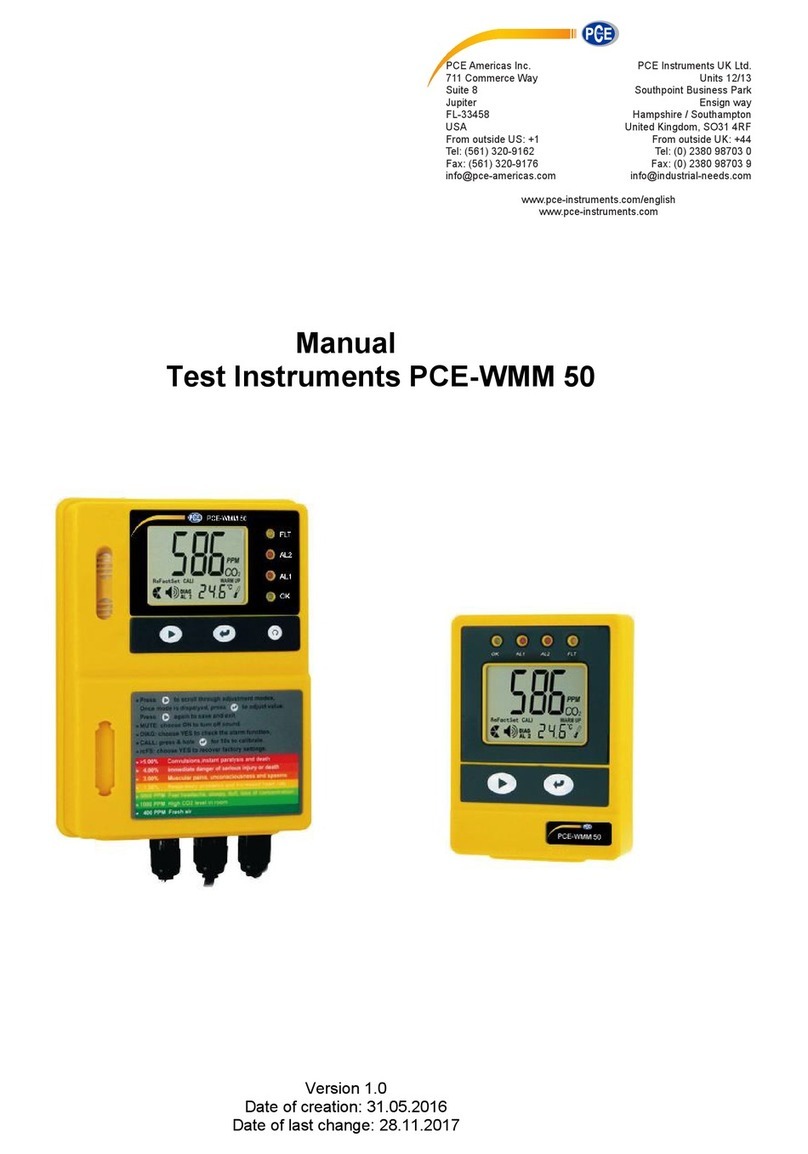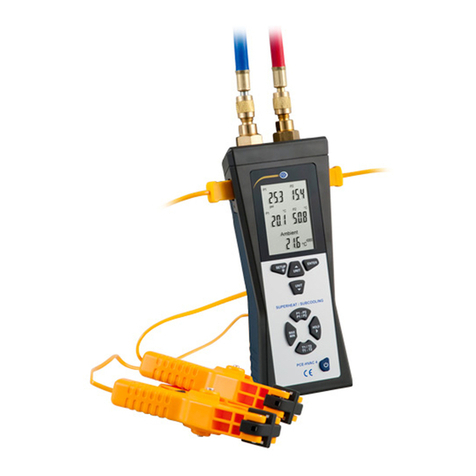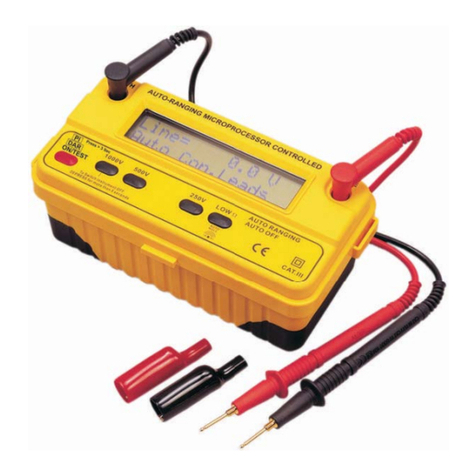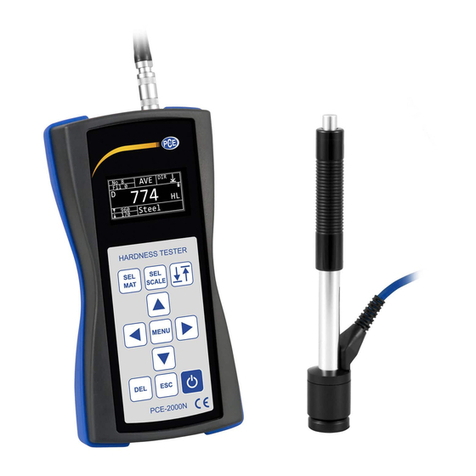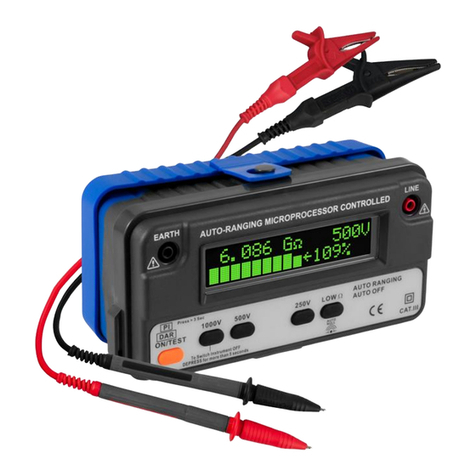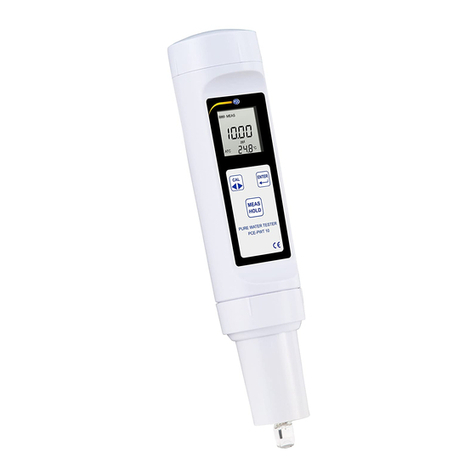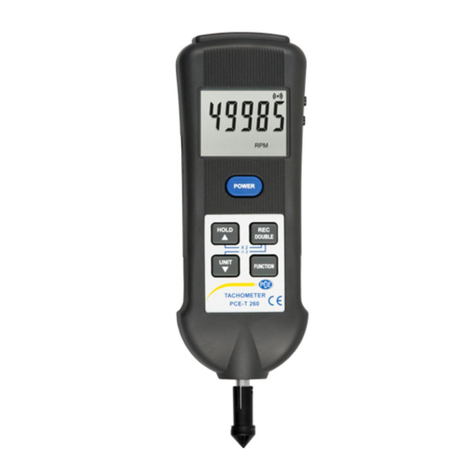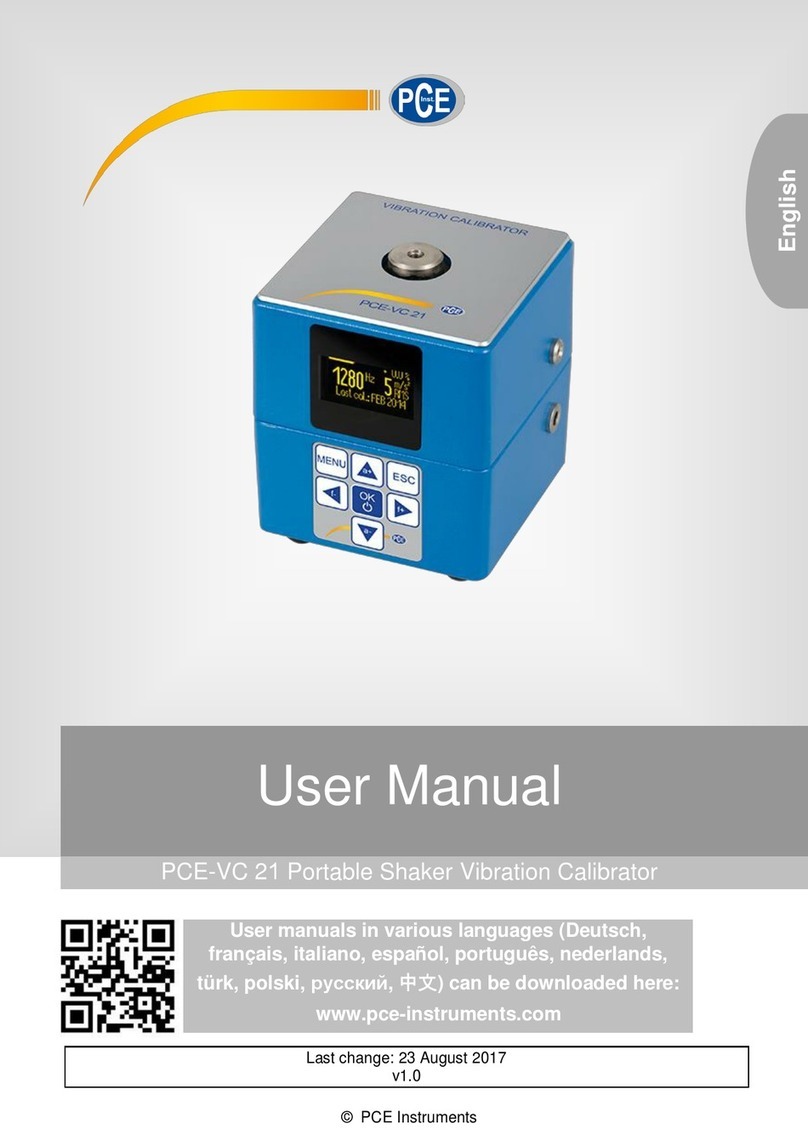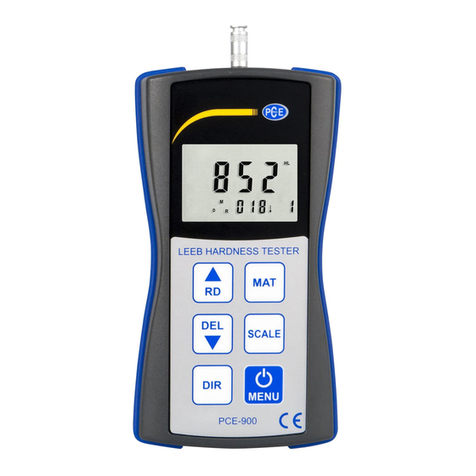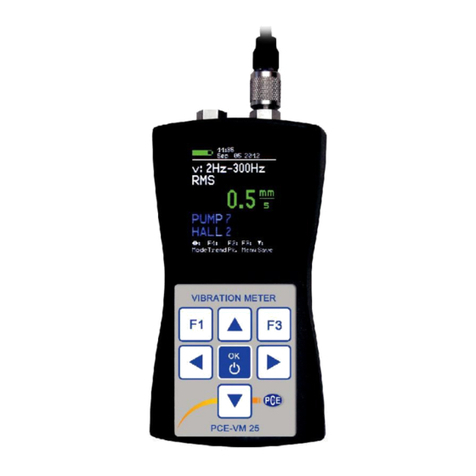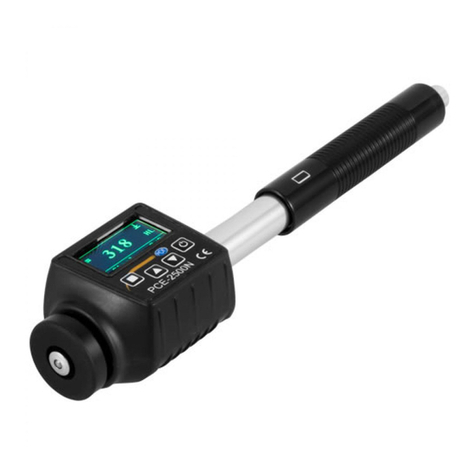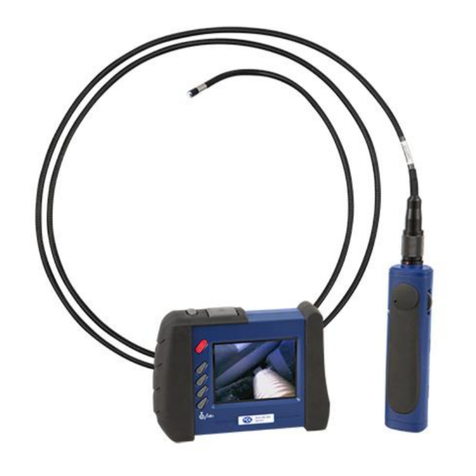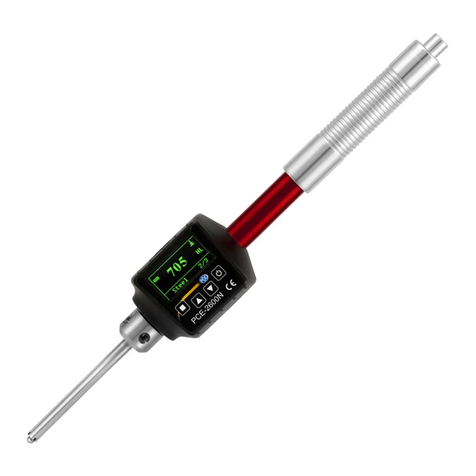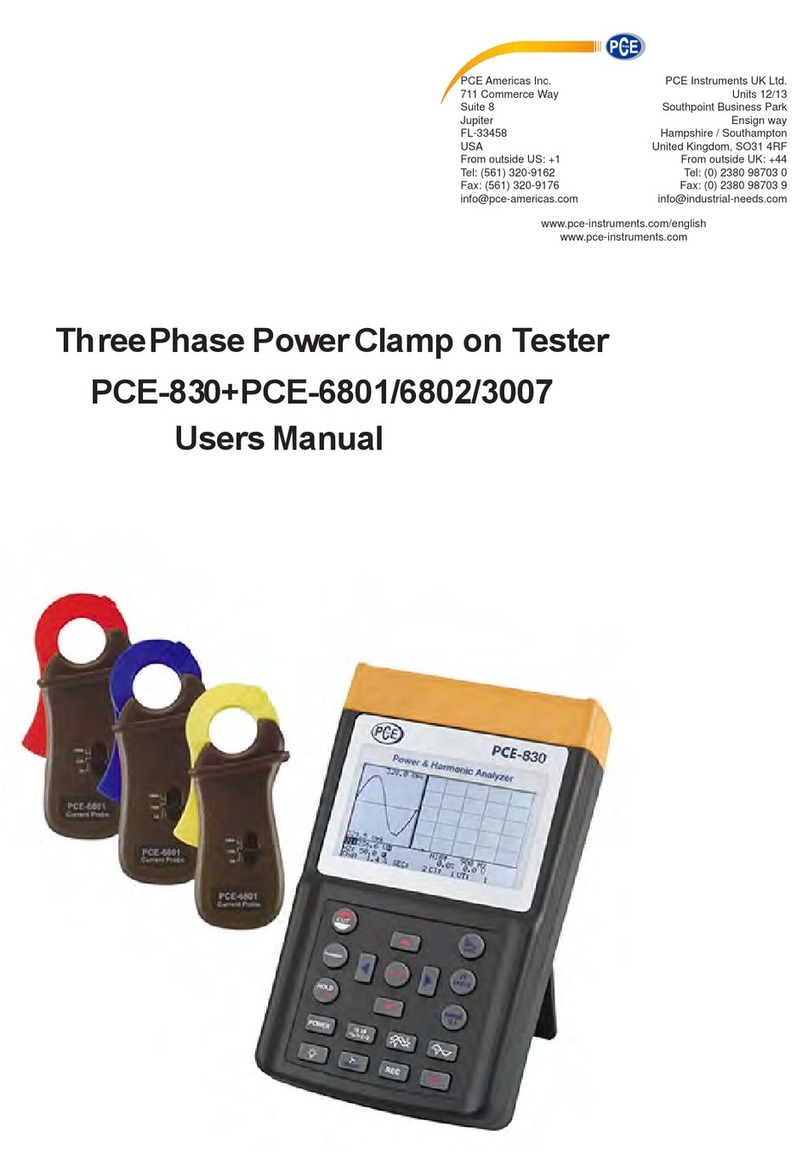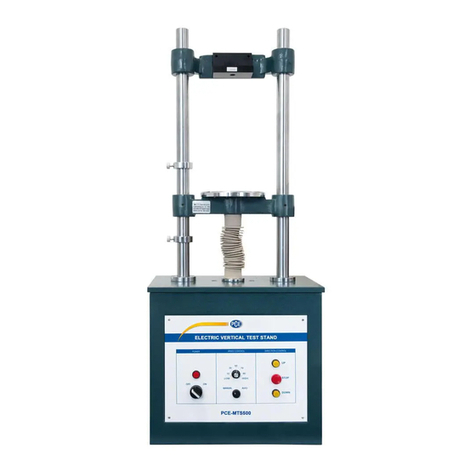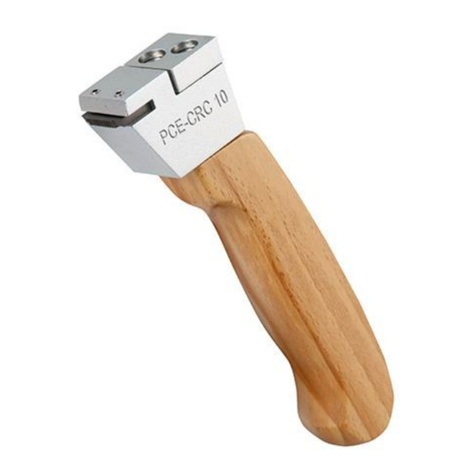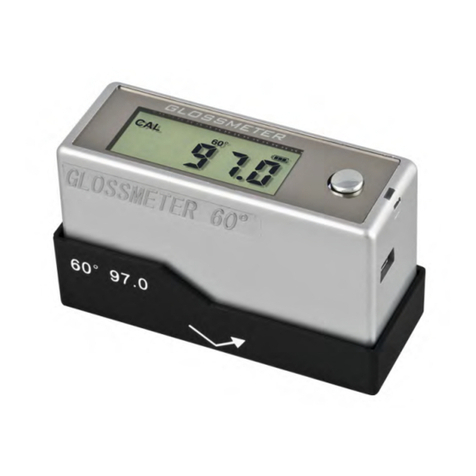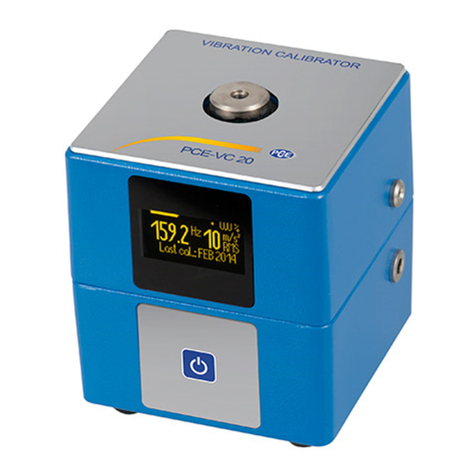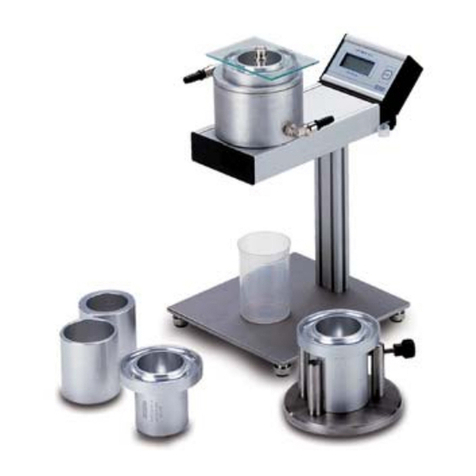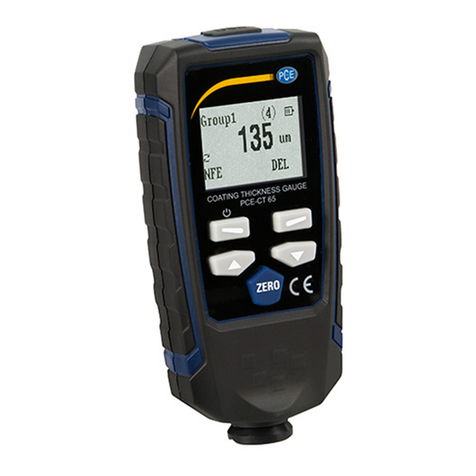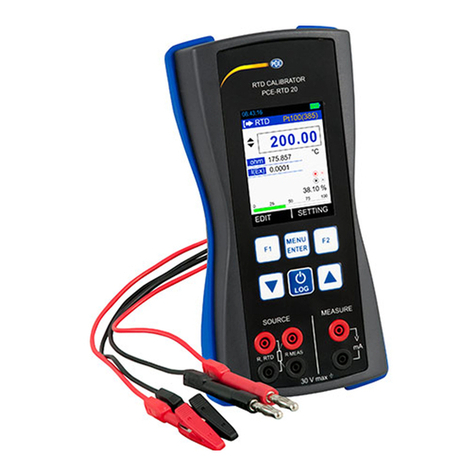CALCAL
PC RCPC RC
GAUSSGAUSS
D PD P
R
RR
aa
RRRRRR
zz
qq
tt
¡À¡À
20um20um
¡À¡À
40um40um 80um80um
¡À
umum
uinuin
2.5mm2.5mm
0.8mm0.8mm
0.25mm0.25mm
3.19
3.20
Fig. 3.5
3.23
3.21
3.22
3.24
3.25
3.26
3.19 Filter
3.20 Calibration
3.21 Measurement
3.22 Position pointer
3.23 Browsing
3.24 Memory
3.25 Parameters
3.26 Battery
3.3installation and unloading of sensor
Toinstall, hold the main part of the sensor by hand,
push it into connection sheath at the bottom of the
pull it out.
a.The probe of the sensor is the main part of this
instrument and requires close attention
not be touched in order to avoid damage which can
affect measurement results.
c. Connection of the sensor should be reliable during
installation.
b. During installation and unloading, the probe should
of sensor or the root of protective sheath andslowly
push to the end ofsheath. To unload, hold the main part
5
3.29
3.28
3.27
3.27 Unit
3.28 Cutoff
3.29 Ranges
instrument as shown in Figure 3.4 and then slightly
8
Length, please see the table in 10.7on page 15.
E. To check if the profile filter selected is right. if not,
or key.
F. To check if the measurement unit selected is right.
To switch between the metric system and the
British system. To quit, just press the any key other
than key or key.
G. To clear the surface of the part to be measured;
H. Refer to Figure 3.7 and Figure 3.8 to place the
surface to be measured. Adjust
I. Refer to Figure 3.8: the sliding trail of the sensor
must be vertical to the direction of process line of the
measured surface.
J. Adjustable leg and sheath of sensor
Instrument correctly, stable and reliably on the
the bottom surface of the instrument, the sheath of sensor
complete measurement (as shown in 3.9).
if not, depressing the key and not releasing it till
starting depressing key . and then pressing or
'UNIT' on the Display. It takes about 8 seconds from
and not releasing it till 'FILT'
on the Display . It takes about 4 seconds from starting
Depressing . and then pressing key or key
to cycle between RC,PC-RC,Gauss,D-P or vice
versa. To quit, just press the any key other than key
depressing the
and adjustable leg can be used for auxiliary support to
When the measured surface of the part is smaller than
DEL
MENU
DEL
MENU
READ
SAVE
SAVE
READ
READ
READ
DEL
MENU
DEL
MENU
SAVE
SAVE
After preparations is done, just press Start key to measure
probe stop sliding and move backward. The measurement
result shows on the display after the probe stop moving.
4.2 Measuring
4.2.1 Save the measurement results to the tester for
later use
4.2.2 How to browse the different parameters
In state, you can browse different parameters.
The corresponding parameter and its value show on
the display once depressing the key
4.2.3 Delete the measurement results
to automatically. On the other hand, the new
measurement results will replace the old ones if
pressing the Start key in state.
5.HOW TO BROWSE THE MEMORIZED DATA
No matter in state or state, you can browse
the memorized data by depressing the key . The
browsing state is marked in on display. When in
the key or key . The serial number of the group
depressing the key . Then the symbol changes
state, you can browse different groups by depressing
10
After measuring, you will see the original becomes
the key .
Then the symbol M changes to M
if measuring conditions are not to be changed. Firstly,
you will see the on the display and the probe is
moving forward and sampling. Then you will see the
the M . in such a state, you can save this group of
results including Ra,Rz,Rq,Rt and measurement
conditions to the memory of the tester by depressing
automatically while the number of memorized groups
increases 1.
In state, you can delete this group of results by
SAVE
RaRz...
DEL
MENU
READ
READ
SAVE
MM
M
R
R
M
M
M
M
M
---
7
measurement, preparations have to be made and checked.
to select.For the recommended cutoff
4.MEASURING PROCEDURES
4.1 Preparations for measurement
A. Switch onto test ifthe battery voltageis normal.
B. The instrument automatically restores conditions
of the lastmeasurement before it is turned off since
these conditions are automatically stored.
Meanwhile, the secondline of 2 digits on display
C. To check ifthe range selectedis right. ifnot,
depress the key to select.
D. To check ifthe cutoff length selected isright. if not,
shows the groups stored in the memory. Before taking
depress the key
Part while charging.
B. The meanings of battery indicators are:
Indicates normal voltage and measurement can be
carried out;
should be charged as soon as possible;
A. Layout of connection lines shouldn t affect measuring
The black part inside prompt shows capacity of
Battery; Indicates too-low voltage and battery
charging so that it is not necessary to turn it off. The
indicates that batteryis full.
C. Relative highnoises of thepower source canaffect
measurement to weaksignal to someextent when
battery is being charged;
D. The instrument needs to monitor the process of
instrument will turnon automatically evenwhen
switched off.
RANGE
CUTOFF
